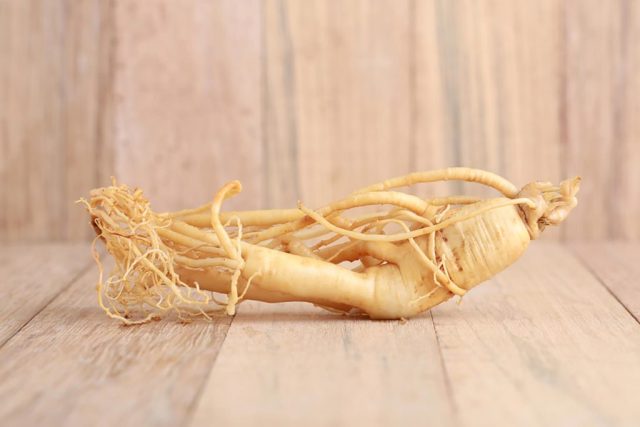Can herbs or supplements help you control your diabetes? These 10 have shown some promise in lowering blood sugar, boosting insulin sensitivity, reducing high blood pressure and cholesterol, and more.
Gymnema sylvestre
Talk to you doctor before adding any new pill to your regimen, especially if it has the potential to lower your blood sugar. You may need to check your blood sugar more often and possibly have your doctor adjust your medication dosage. If you don’t see results after a month or two, stop wasting your money.
- Main use: Lowering blood sugar
- Typical dosage: 200 to 250 milligrams twice daily
This plant’s Hindi name translates as “sugar destroyer,” and the plant is said to reduce the ability to detect sweetness. It’s regarded as one of the most powerful herbs for blood-sugar control. It may work by boosting the activity of enzymes that help cells use glucose or by stimulating the production of insulin. Though it hasn’t been studied extensively, it’s not known to cause serious side effects. Try these healthy habits to prevent diabetes.
Bitter melon

- Main use: Lowering blood sugar
- Typical dosage: 50 to 100 milliliters (approximately 3 to 6 tablespoons) of the juice daily
The aptly named bitter melon is thought to help cells use glucose more effectively and block sugar absorption in the intestine. When Philippine researchers had men and women take bitter melon in capsule form for three months, they had slight, but consistently, lower blood sugar than those taking a placebo. Gastrointestinal problems are possible side effects. You can reverse diabetes with these science-backed strategies.
Magnesium

- Main use: Lowering blood sugar
- Typical dosage: 250 to 350 milligrams once a day
Magnesium deficiency is not uncommon in people with diabetes, and it can worsen high blood sugar and insulin resistance. Some studies suggest that supplementing with magnesium may improve insulin function and lower blood sugar levels, but other studies have shown no benefit. Have your doctor check you for deficiency before supplementing with magnesium. These are signs that you’re not getting enough magnesium.
Prickly pear cactus

- Main use: Lowering blood sugar
- Typical dosage: If you eat it as a food, aim for 1⁄2 cup of cooked cactus fruit a day. Otherwise, follow label directions.
The ripe fruit of this cactus has been shown in some small studies to lower blood sugar levels. You may be able to find the fruit in your grocery store, but if not, look for it as a juice or powder at health food stores. Researchers speculate that the fruit may possibly lower blood sugar because it contains components that work similarly to insulin. The fruit is also high in fiber. Try these foods for the best diabetic diet.
Gamma-linolenic acid

- Main use: Easing nerve pain
- Typical dosage: 270 to 540 milligrams once a day.
Gamma-linolenic acid, or GLA, is a fatty acid found in evening primrose oil. Some research suggests that people with diabetes have lower than optimal levels of GLA, and studies have found that the supplement can reduce and prevent nerve pain associated with diabetes. Avoid these bad eating habits for people with diabetes.
Chromium

- Main use: Lowering blood sugar
- Typical dosage: 200 micrograms once daily.
This trace mineral is thought to enhance the action of insulin as well as being involved in carbohydrate, fat, and protein metabolism. Some research shows that it helps normalize blood sugar — but only in people who are deficient in chromium.
Billberry

- Main use: Protecting the eyes and nerves
- Typical dosage: 80 to 120 milligrams two times per day of standardized bilberry extract.
This relative of the blueberry contains powerful antioxidants in its fruit and leaves. These antioxidants, called anthocyanidins, seem to help prevent damage to tiny blood vessels that can result in nerve pain and retinopathy (damage to the eye’s retina). Animal studies have also suggested that bilberry may lower blood sugar.
Alpha-lipoic acid

- Main uses: Easing nerve pain, lowering blood sugar
- Typical dosage: 600 to 800 milligrams a day.
Called ALA for short, this vitamin-like substance neutralizes many types of free radicals. A build-up of free radicals, caused in part by high blood sugar, can lead to nerve damage and other problems. ALA may also help muscle cells take up blood sugar. In a German study, a team of scientists had 40 adults take either an ALA supplement or a placebo. At the end of the four-week study, the ALA group had improved their insulin sensitivity 27 percent. The placebo group showed no improvement. Other studies have shown a decrease in nerve pain, numbness, and burning.
Fenugreek

- Main use: Lowering blood sugar
- Typical dosage: 5 to 30 grams with each meal or 15 to 90 grams with one meal per day.
These seeds, used in Indian cooking, have been found to lower blood sugar, increase insulin sensitivity, and reduce high cholesterol, according to several animal and human studies. The effect may be partly due to the seeds’ high fiber content. The seeds also contain an amino acid that appears to boost the release of insulin. In one of the largest studies on fenugreek, 60 people who took 25 grams daily showed significant improvements in blood sugar control and post-meal spikes.
Ginseng

- Main use: Lowering blood sugar
- Typical dosage: 1 to 3 grams a day in capsule or tablet form, or 3 to 5 milliliters of tincture three times a day.
Known for its immune-boosting and disease-fighting benefits, this Chinese herb has several positive diabetes studies behind it. Researchers have found that ginseng slows carbohydrate absorption; increases cells’ ability to use glucose; and increases insulin secretion from the pancreas. A team from the University of Toronto has repeatedly demonstrated that ginseng capsules lower blood glucose 15 to 20 percent compared to placebo pills. These are the best superfoods for people with diabetes.





